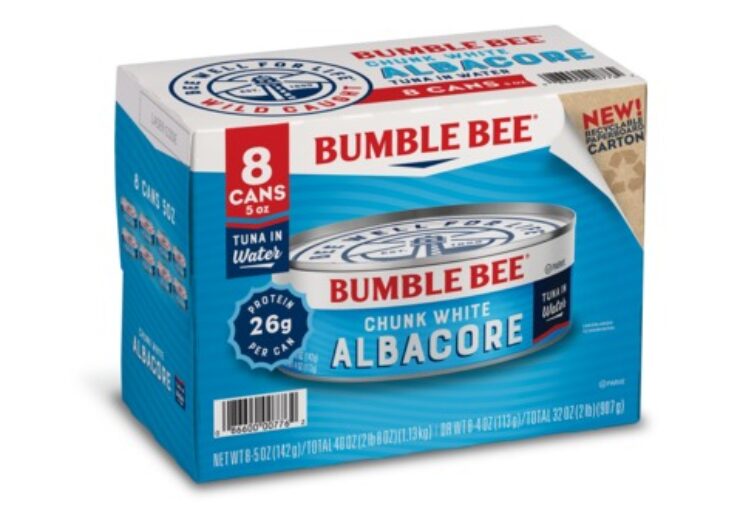Certified by Forest Stewardship Council, the paperboard is comprised of 100% recycled material, with a minimum of 35% post-consumer content

The company achieves 98% readily recyclable packaging with shift to paperboard cartons on multipack can products. (Credit: Business Wire/ Bumble Bee Foods, LLC)
The Bumble Bee Seafood Company announced its decision to replace shrink wrap used in its multipack can product packaging with recyclable paperboard cartons.
Through the move, the firm will become the first shelf-stable seafood brand to adopt this shift and claims to save 23 million pieces of plastic waste per year.
The change will be used on all Bumble Bee multipacks, a total of 23 SKUs, including 4-can, 6-can, 8-can, 10-can, and 12-can packages.
Certified by Forest Stewardship Council, the paperboard is comprised of 100% recycled material, including a minimum of 35% post-consumer content, which makes the product box recyclable from outside and inside both.
The new solution has an advanced package design, an easier-to-read label, and the option to easily stack the box vertically or horizontally on the shelf.
It can be easily recycled within the home recycling systems and assists retailers in meeting their own environmental goals, such as reducing plastic waste, said the company.
The Bumble Bee Seafood Company president and CEO Jan Tharp said: “We recognize that the ocean provides food for more than 3 billion people annually. To keep feeding people through the power of the ocean, we need to also protect and nurture our ocean.
“We know that the packaging we use on our products can play a role in that. Changing our multi-pack packaging to be readily recyclable will help us continue to meet our commitment to keeping plastic out of landfills and out of the ocean.”
In 2020, Bumble Bee announced “Seafood Future,” a sustainability and social impact campaign to make 98% of Bumble Bee packaging recyclable by 2025.
With the switch from shrink wrap to paperboard, the brand will go from 96% to 98% readily recyclable packaging, exceeding the desired schedule by three years.
